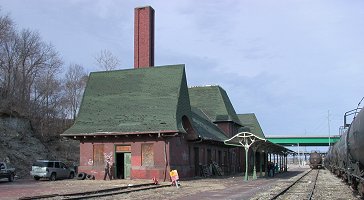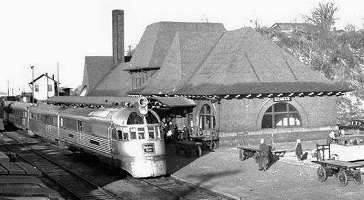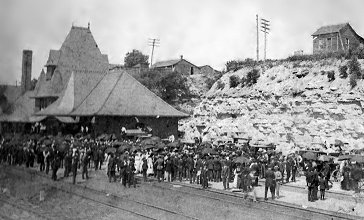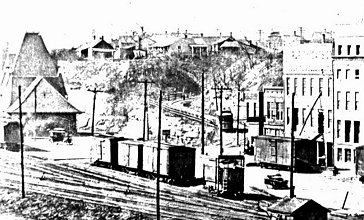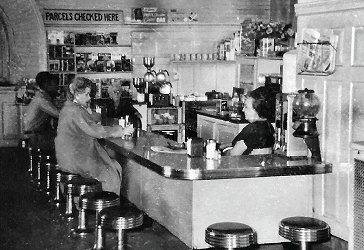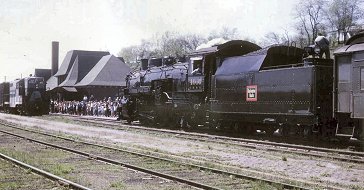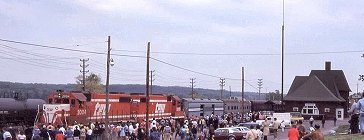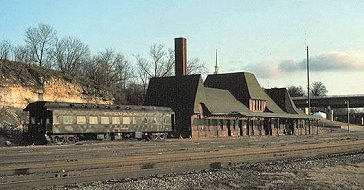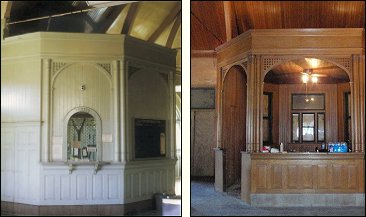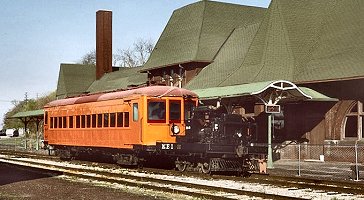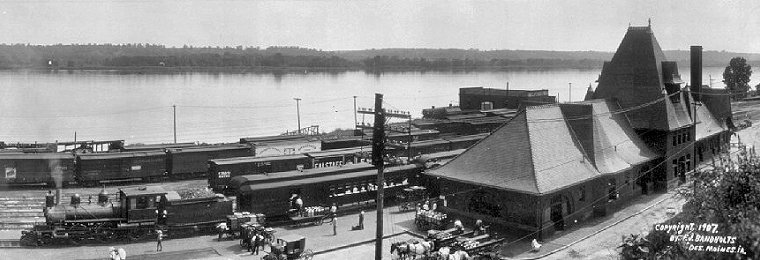A Short History of the Keokuk Union Depot |
|||||
|
The Keokuk Union Depot, erected in 1891, was designed by the Chicago architectural firm Burnham and Root, noted for its railroad depot designs across the Midwest. Five railroads served Keokuk, a bustling business and transportation center at the confluence of the Mississippi and Des Moines Rivers and site of a series of locks that allowed river traffic to bypass the rapids upriver from the city. The new depot, combining passenger and express traffic of all railroads, was constructed and operated by the Keokuk Union Depot Company, jointly owned by the railroads. Read a newspaper article from 1890 describing Keokuk's proposed Union Depot. The Depot is distinguished by its Romanesque Revival features and is noted in the architectural preservation community as one of the last designs of John Wellborn Root. It is listed in the National Register of Historic Places. The 178-foot building was constructed at a cost of $75,000. Read a newspaper article from 1891 describing the opening of the Union Depot. The central section, which originally contained offices on the second floor above the baggage room, was topped by the 64-foot-high peaked tower visible in the historic photo below and the postcard illustration at the bottom of the Rental and Events page. The vaulted waiting room is at the northeast end, while the southwest end originally served express agencies and contained the steam heating plant.
The Depot was illuminated at first by both carbide gas lamps and around 175 incandescent bulbs. The waiting room included a lunch counter for the convenience of travelers and other frequenters of the Depot. Older illustrations show a clock in the central tower, but it was never installed.
A fire caused by lightning on July 8, 1937 damaged the tower. A 1949 photo shows it still in place along with the original clay tile roof. The tower was leveled off, losing 24 feet of height, and the tiles were replaced by shingles shortly after that time. Some interior walls were modified with changing needs through the years, as express and mail operations were altered. Nevertheless, the Depot retains its classic lines and its platform umbrella ("train shed"), which protected entraining passengers. Read a newspaper article from 1937 describing the fire that damaged the Depot's central tower.
The Union Depot served railroad travelers and express shippers until the end of rail passenger service to Keokuk in 1967. In the earlier 1900s passenger service was provided by the Toledo, Peoria & Western; the Wabash Railroad; the Chicago, Rock Island & Pacific ("Rock Island Lines"); and the Chicago, Burlington & Quincy ("Burlington Route"). Read a newspaper article from 1978 about the elimination of the telegraph line to the Depot. Keokuk was an important stop for the Burlington Route's streamlined Mark Twain Zephyr, inaugurated in 1935 between St. Louis, Missouri and Burlington, Iowa, and later for the Zephyr Rocket, a joint service of the Burlington and Rock Island between St. Louis and Minneapolis. For further information, visit our Passenger Service page. |
After passenger service was discontinued the freight railroads serving Keokuk used the Depot as a headquarters for their agents and operators. The last trains to carry passengers through Keokuk were railfan excursions. A Burlington Route excursion in May 1963 was pulled by preserved 2-8-2 (Mikado type) No. 4960.
The last train to carry passengers in Keokuk was apparently a 20-car railfan excursion operated by Golden Arrow Lines in May 1980 over the Toledo, Peoria & Western. While the trip featured restored Nickel Plate 2-8-4 765, between La Harpe, Illinois and Keokuk it was hauled by TP&W diesels.
In 1981 the Keokuk Junction Railway purchased the shares of the Keokuk Union Depot Company, having previously acquired local trackage and switching rights from the bankrupt Rock Island. Beginning in December 1986 its operations extended over Atchison, Topeka & Santa Fe (former TP&W) trackage to La Harpe using the Mississippi River bridge owned by the City of Keokuk.
Led by owners John Warfield and Rich Taylor, the Keokuk Junction renovated the Depot's waiting room in 1991, removing a false ceiling and partitions and restoring the woodwork's oak finish. The Depot was the base for the Keokuk Junction's tourist train operations, some including the former Wabash parlor car renamed Chief Keokuck, and for its popular Trans-Mississippi trolley rides across the river to Illinois.
In 1996 Pioneer Railcorp acquired the assets of the Keokuk Junction Railway, including the Union Depot, and used the building for storage. In 2011 Pioneer Railcorp conveyed the Depot and adjacent land to the City of Keokuk for a period of 99 years. The City formed a Depot Commission, named by the Mayor, to oversee the management and restoration of the Depot. In 2012 the non-profit Keokuk Union Depot Foundation was established to raise funds to restore the structure, its directors not required to be Keokuk residents. |
||||
|
Burlington Bulletin No. 60 was published in May 2020 by the Burlington Route Historical Society. This 106-page soft cover book features the history of the Burlington Route lines through Keokuk, and provides a comprehensive illustrated history of Keokuk's railroad-related industries. It is available for $30.00 through the BRHS's Company Store page. (Select "Burlington Bulletin," click "Submit," and scroll down to Bulletin #60.) |
|||||
|
|||||
|
Do you have a memory of the Keokuk Union Depot, or an old photo? Email it to the Depot Commission: |
|||||
|
|
|||||




